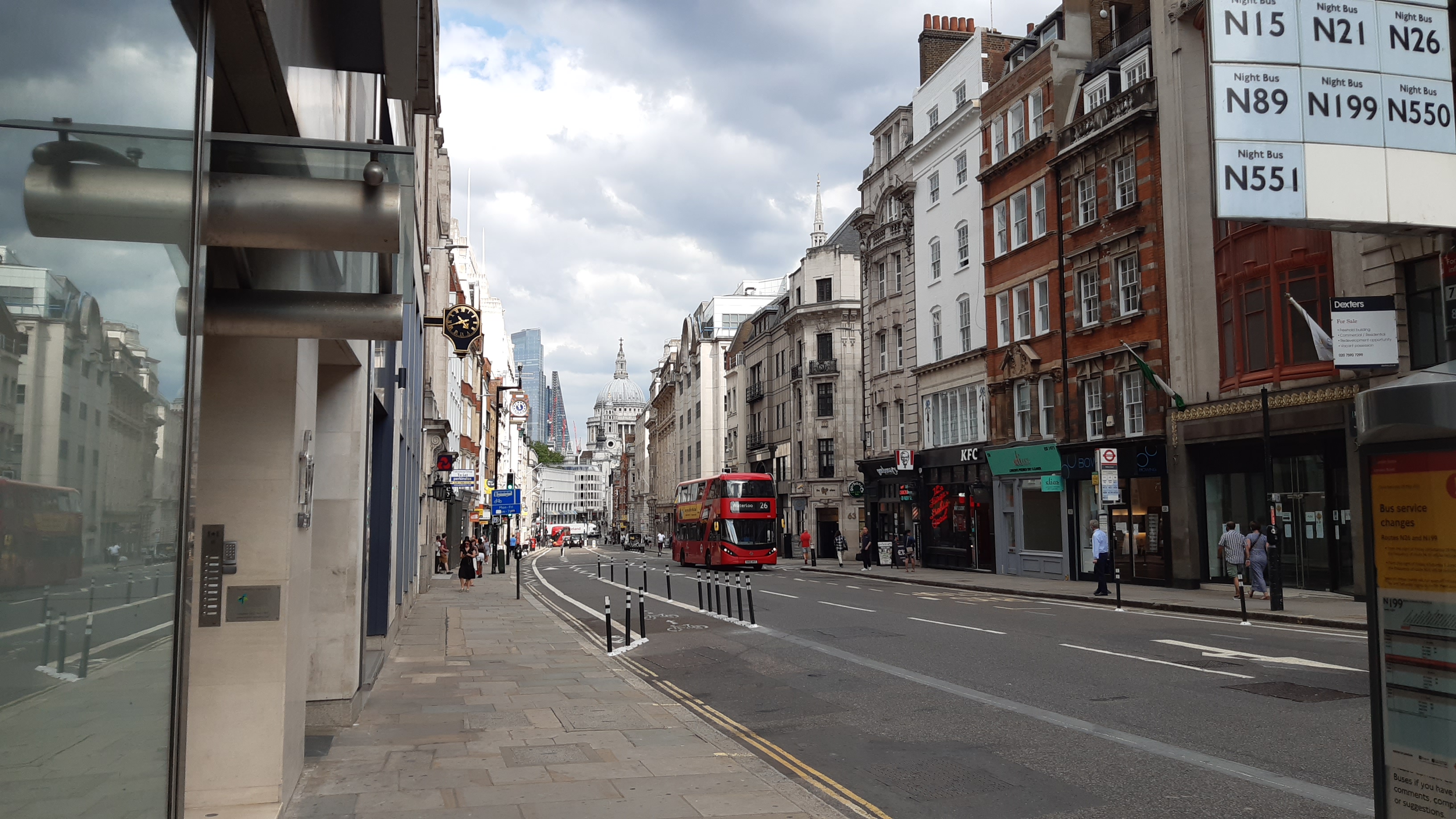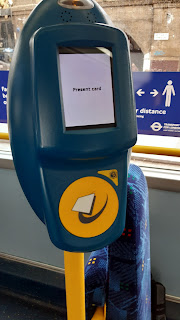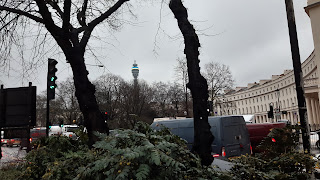The 19 Tunnels Under the Thames
Exactly 100 words about each of the 19 tunnels that pass under the Thames. Only tunnels that you can travel under as a member of the general public are counted (or have the majority of their construction completed) this excludes any utility tunnels constructed for power cables and the Silvertown tunnel which only started construction in March 2021. The tunnels are counted as one even if they have separate bores (avoiding me having to write double). The tunnels are ordered from west to east to mimic the flow of the Thames. And finally even this introduction was exactly 100 words.
Victoria Line - Between Vauxhall and Victoria
Opened in 1971, on the Victoria line extension from Victoria to Brixton, two years after the northern section of the line opened in 1969. In the first year of the tunnels operation the station to the north was Victoria but in 1972 Pimlico opened which then became the station to the north of the tunnel. Pimlico is the only station on the Victoria Line which doesn’t interchange with another underground or rail line. To the south is Vauxhall station which has a unique bus station with a “runway like” roof and South Western Railway services which serve south west London.
Jubilee Line - Between Westminster and Waterloo
Part of the Jubilee line extension opened in 1999 which was from Westminster to Stratford and the extension contributes 4 tunnels to the list. This tunnel along with the whole of the Jubilee line extension has recently installed “leaky feeder” cables which allow you to use 4G inside the tunnels. Before the Jubilee line extension the Jubilee line ended at the now abandoned platforms of Charing Cross. The jubilee line trains are almost identical to the northern line trains. Both were manufactured in the late nineties by Alsthom-Metro-Cambell. Both companies now don’t exist and have been consumed into larger entities.

|
| The Jubilee line tunnel is located underground here between the London eye and the houses of parliament. |
Bakerloo Line - Between Embankment and Waterloo
The Bakerloo and Northern lines here are almost parallel and both traverse underneath the same alignment followed by Southeastern trains between Waterloo East and Charing Cross. Embankment station to the north of this tunnel has a complex naming history and used to be called, at one point, Charing Cross. Embankment's station building is also only a few metres from the river this tunnel passes under. Embankment to Waterloo (only the national rail station) is an OSI (Out of Station Interchange) and is one of the longest with 40 minutes given to make the connection with only one fare being taken.
Northern Line - Between Embankment and Waterloo
The Northern line is known for its overcrowding and it’s often given the name “misery line” which is partly caused by the trains only being six carriages compared to the eight cars on the Central and Victoria lines. Embankment used to be the terminus of the Northern line (probably wasn’t called the Northern line at the time) and a loop of track was built, partially under the river, to turn around trains. The remains of this is seen on the northbound platform at Embankment as it has a large tight curve and its own special announcement of “mind the gap”.

|
| Blackfriars station on the bridge with the Waterloo and city lines below |
Waterloo and City Line - Between Waterloo and Bank
Waterloo has 4 different ways for you to cross the River Thames, in a tunnel, the most for any station. And at Bank, the other of the two stations on the Waterloo and City line, the shortest line on the underground, there are two ways to cross under the river with the other being on the Northern line. This tunnel is actually located slightly west of Blackfriars station which is located on top of the River Thames (well the national rail part is on a bridge) unlike next to the Northern line (Bank branch) as appears on the tube map.
Northern Line - Between London Bridge and Bank
This is the second Northern line tunnel, but you will never be able to get a single train through both of them because of the Northern Line’s interesting and unique double path through central London. The tunnel here is on the same alignment as the part of the first deep level tube line which opened in 1890 on what at the time was called the City and South London Railway. At Bank the southbound platform is getting relocated with the works scheduled to be completed within a year which is being done to allow for significant capacity improvements to happen.

|
| Tower Bridge which has the Northern and abandoned City and South London railway tunnels underneath |
Overground - Between Rotherhithe and Wapping
This is the oldest, completed, tunnel under the Thames which construction took many lives. It was first opened 1843 after 15 tumultuous years of construction with at least one flood. When opened it was for horse-drawn carriages but was quickly used predominantly by pedestrians and also became somewhat of a tourist attraction. In 1869 the tunnel was turned into a railway tunnel and later formed part of the East London Line. The East London Line was part of the tube but the line now doesn’t exist as the whole of the line was upgraded and became part of the Overground.

|
| Roughly the location of the Thames and Rotherhithe tunnels |
Rotherhithe Tunnel
The Rotherhithe Tunnel is a road tunnel used by cars and is also possible to walk through, but it is not recommended due to the toxic fumes. The tunnel is only allowed to be traversed by vehicles less than 2 metres tall and 2 metres wide and also weighing under 2 tonnes. These restrictions mean there are no TfL operated bus services operated through the tunnel after route 395 was withdrawn in 2006. The tunnel was completed in 1908 after 4 years of construction and unlike most tunnels on this list is a single bore for both directions of traffic.
Jubilee Line - Between Canada Water and Canary Wharf
On the Jubilee line extension and opened in 1999, just months before the start of the new millennium, to the east of the tunnel is Canary Wharf, a monolith of a station with 3 exits, in the heart of Canary Wharf with One Canada Square just outside. Canary Wharf station and the whole Jubilee Line extension have installed platform edge doors. Your first thought might be that they are for passenger safety but they are, allegedly, predominantly installed for circulation and smoke removal. This is particularly important for the Underground after the King’s Cross fire which killed 31 in 1987.

|
| The Greenwich foot tunnel |
Greenwich Foot Tunnel
The first of two tunnels under the Thames solely for use by pedestrians (also used by cyclists) and opened in 1902. Before the DLR extension to Lewisham opened in 1999 this tunnel was the only way to get to and from Greenwich from the, interestingly named, Isle of Dogs. The tunnel has also suffered bomb damage from the Second World War and the repairs carried out are obvious due to the smaller diameter section of the tunnel. From this tunnel it is also possible to hear DLR trains from the next tunnel (because of the very short distance between them).
DLR - Between Cutty Sark and Island Gardens
The DLR has two tunnels under the Thames with this one being constructed first, intriguingly the tunnel boring machine used to build the tunnel is observable in the mezzanine of Cutty Sark station. As the DLR is driverless you can pretend to drive the train through the tunnel which will give you a realistic view of what every other train tunnel looks like (dark, circular and no indication of when you are actually under the River Thames). To build this tunnel and the rest of the line to Lewisham the old station at Island gardens needed to be rebuilt underground.
Jubilee Line - Between Canary Wharf and North Greenwich

|
| From the top of the O2 looking towards Canary Wharf with the Jubilee line tunnel parallel to our view |
Canary Wharf and North Greenwich stations each have a tunnel under the Thames in both directions. To the uninformed reader this might seem absurd as why would the builders voluntarily spend so much money on superfluous tunnels. But the River Thames in this section of East London has some famous meanders so the route of the Jubilee line is logical, direct and provides vital connections between each side of the river. On the eastern bank of the Thames, with this tunnel passing underneath, is the line of the prime meridian which forms the border between the Eastern and Western hemispheres.
Blackwall Tunnel
The Blackwall Tunnel is a road tunnel with its northbound and southbound bores separated (under the Thames) by approximately 200 metres. The two bores were opened slightly more than 70 years apart, with the southbound tunnel (opened in 1967) travelling directly under the O2, formerly called the millennium dome which housed the millennium exhibition in 2000. The Blackwall Tunnel is the only way, east of Tower Bridge, to cross the Thames in a London bus. The 108 runs between Stratford International and Lewisham through the tunnel using single decker busses specifically because the western (northbound) bore cannot accommodate taller vehicles.

|
| The Jubilee's other tunnel lies below from North Greenwich to Canning Town |
Jubilee Line - Between North Greenwich and Canning Town
The 4th and last tunnel under the Thames on the Jubilee line with Canning Town station to the north of the tunnel. Canning town station has 6 platforms (2 Jubilee and 4 DLR) and a bus station. The DLR platforms are on two different levels but by how the station is designed and tracks aligned you can get to both Becton and Woolwich Arsenal from both the upper and lower platforms. With a convoluted journey between the two pairs of platforms as the Jubilee line is directly under one pair of DLR platforms and directly adjacent to the other pair.
Elizabeth Line - Between Custom House and Woolwich
The only currently unopened tunnel on the list, the Elizabeth line is the delayed new railway crossing London. Currently the line, along with this tunnel, is scheduled to open in the “first half of 2022” with the date of March 6th 2022 being rumoured (but every previous rumoured date has been wrong). The Elizabeth line from just north of this tunnel follows the remains of part of the closed part of the North London Line, with the closed part closing in 2006, and the rest of the closed part closed to make way for the DLR extension to Stratford International.

|
| The woolwich foot tunnel |
Woolwich Foot Tunnel
The Woolwich Foot tunnel, only traversable on foot, shadows the free Woolwich Ferry (which also takes vehicles) but unlike the ferry is open 24 hours a day. The tunnel is almost identical to the Greenwich Foot tunnel, and opened 10 years later in 1912. The tunnel had much more use before the opening of the DLR extension from King George V to Woolwich Arsenal as it was required to cross the river into Woolwich. The tunnel lies under the border of the ULEZ (Ultra Low Emission Zone) as it, along with the ferry links the North and South circular roads.
DLR - Between King George V and Woolwich Arsenal

|
| A view in woolwich with its many tunnels under the thames here |
Opened in 2009 on the one stop extension from King George V to Woolwich Arsenal this tunnel has a semicircular shape. Departures from Woolwich Arsenal towards London depart in an eastern direction and after exiting the tunnel the trains are facing west when they arrive at King George V. The tunnel has a maximum depth of 35 metres and was bored using a TBM (tunnel boring machine) called Carla, in keeping with the railway tradition of always naming TBM’s after women. This is the last crossing in Greater London with a distance of over 8 miles before the next crossing.
Dartford Crossing
The Dartford crossing is a pair of road tunnels (1430 metres long), which handles northbound traffic, and the QEII (Queen Elizabeth II) bridge which southbound traffic uses. The western tunnel opened in 1963 and the eastern in 1980, with one tunnel used for each direction of traffic until the opening of the QEII bridge 1991. Currently it is the only road tunnel under the Thames with a charge (currently £2.50 for pay as you go cars) which until 2003 was used to pay off the construction of the QEII bridge. Interestingly, southbound the QEII bridge is free to use.

|
| The entrance to the tunnel on HS1 taken from the QEII bridge |
HS1 - Between Stratford International and Ebbsfleet International
HS1 is the only “proper” high speed rail line operating now in the UK, with HS2 from London to Birmingham (and maybe further) opening in the future. HS1's tunnel under the Thames is the easternmost crossing of the Thames (except some inaccessible utility tunnels). But it is not the most useful for the residents of Thurrock (just north of the Thames at this location) as the first station on this line to the north of the tunnel is Stratford International, which is just a few miles out of central London. This tunnel is used by Eurostar to Paris and Europe.



Comments
Post a Comment